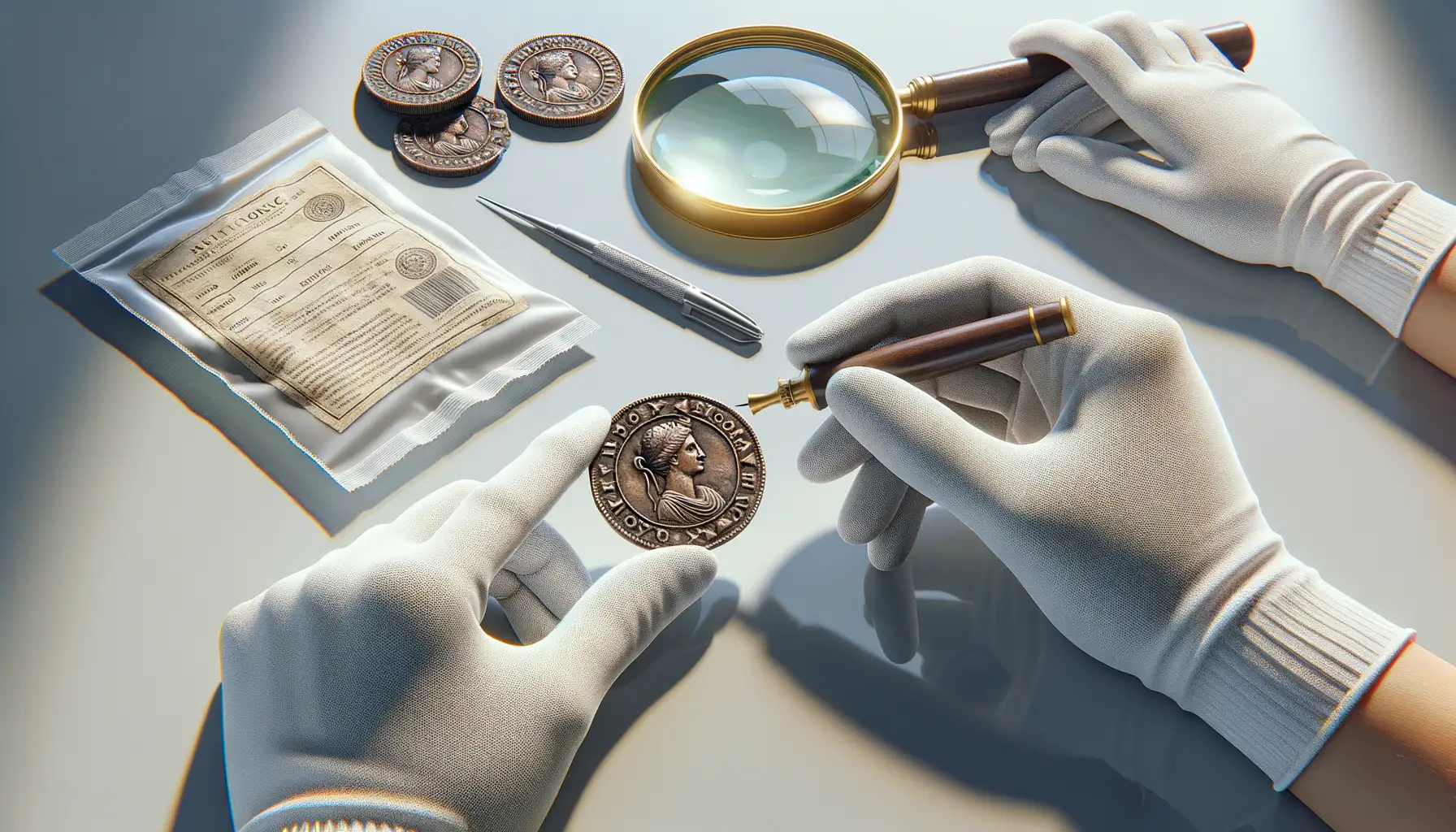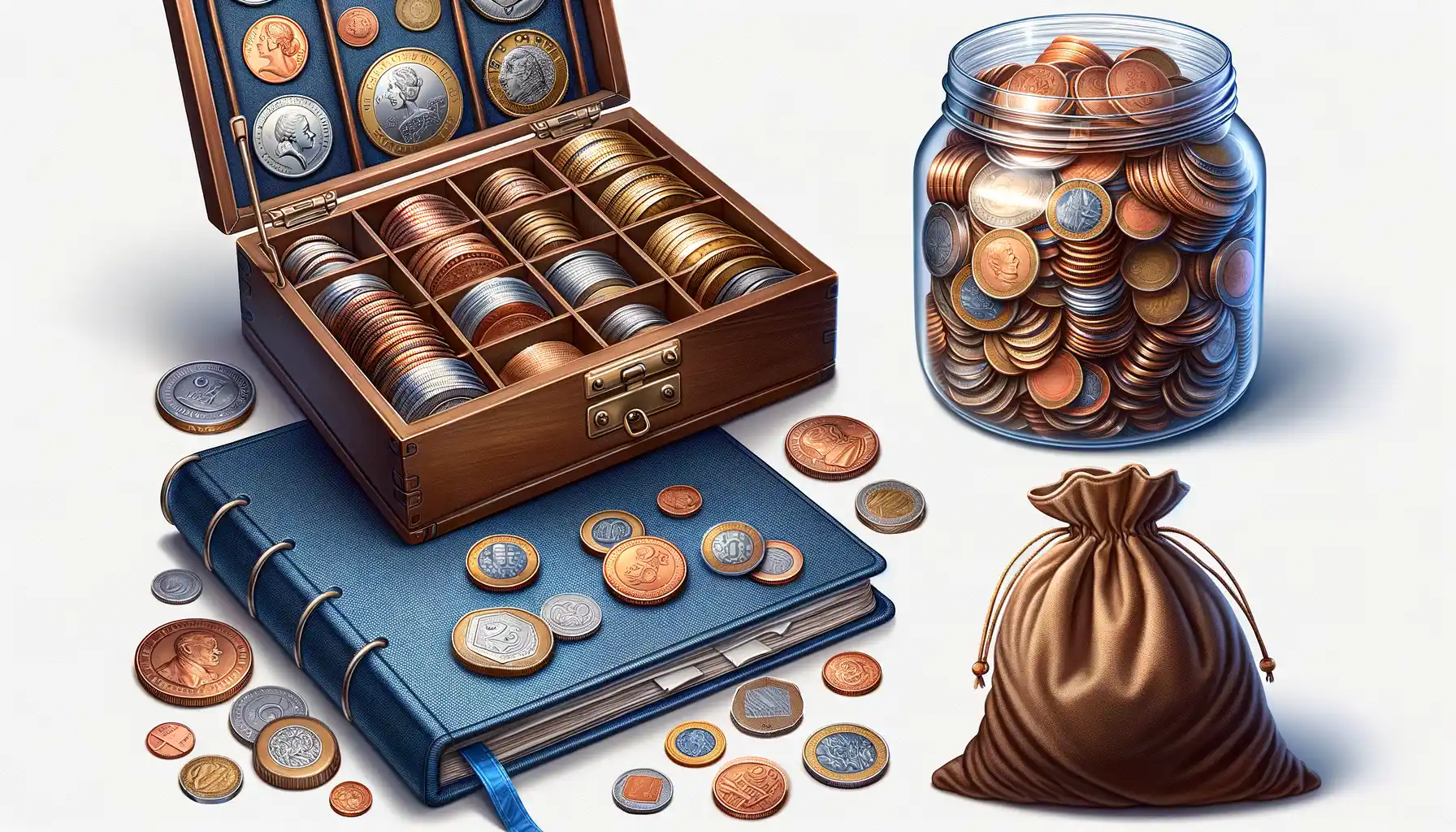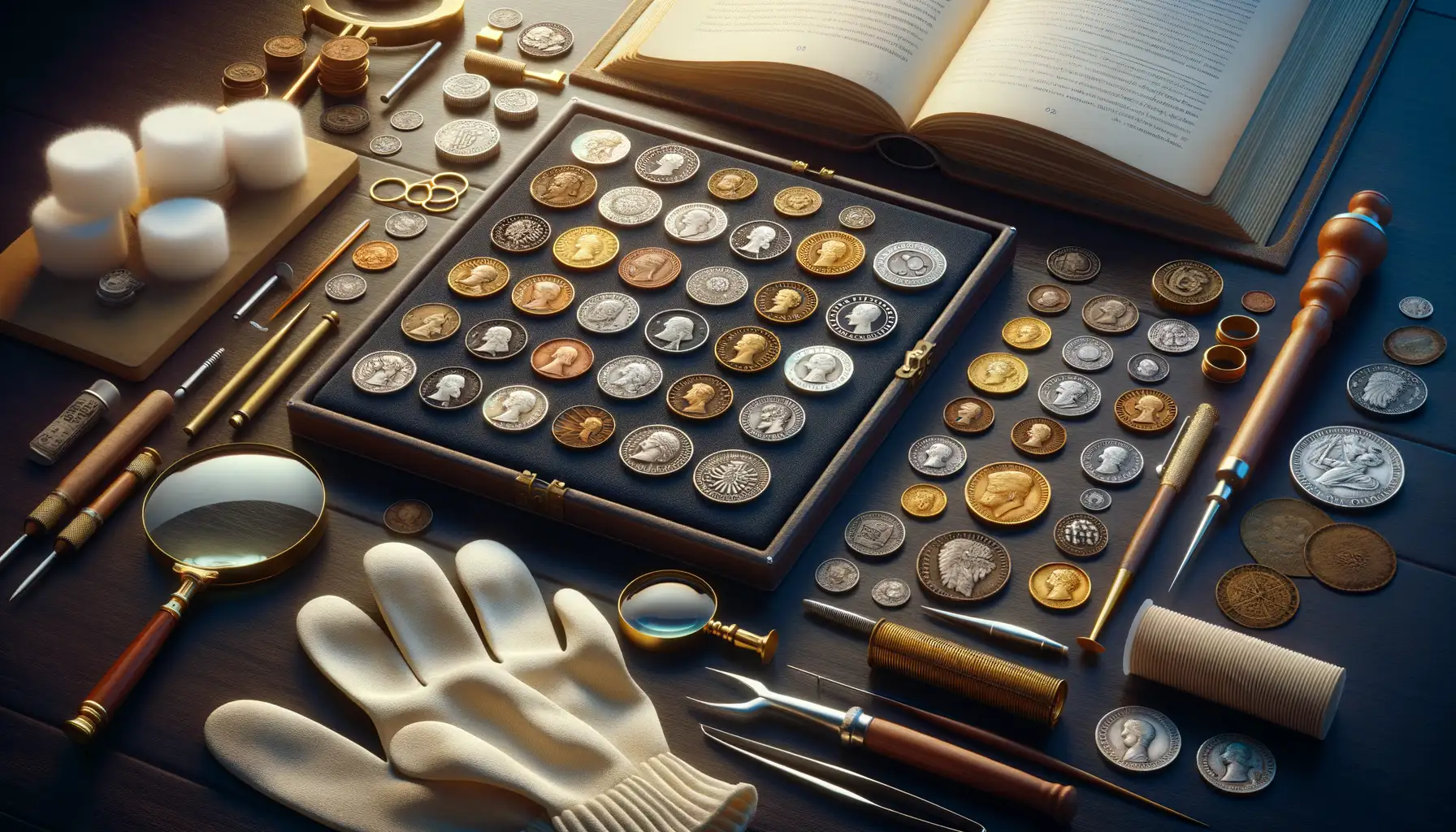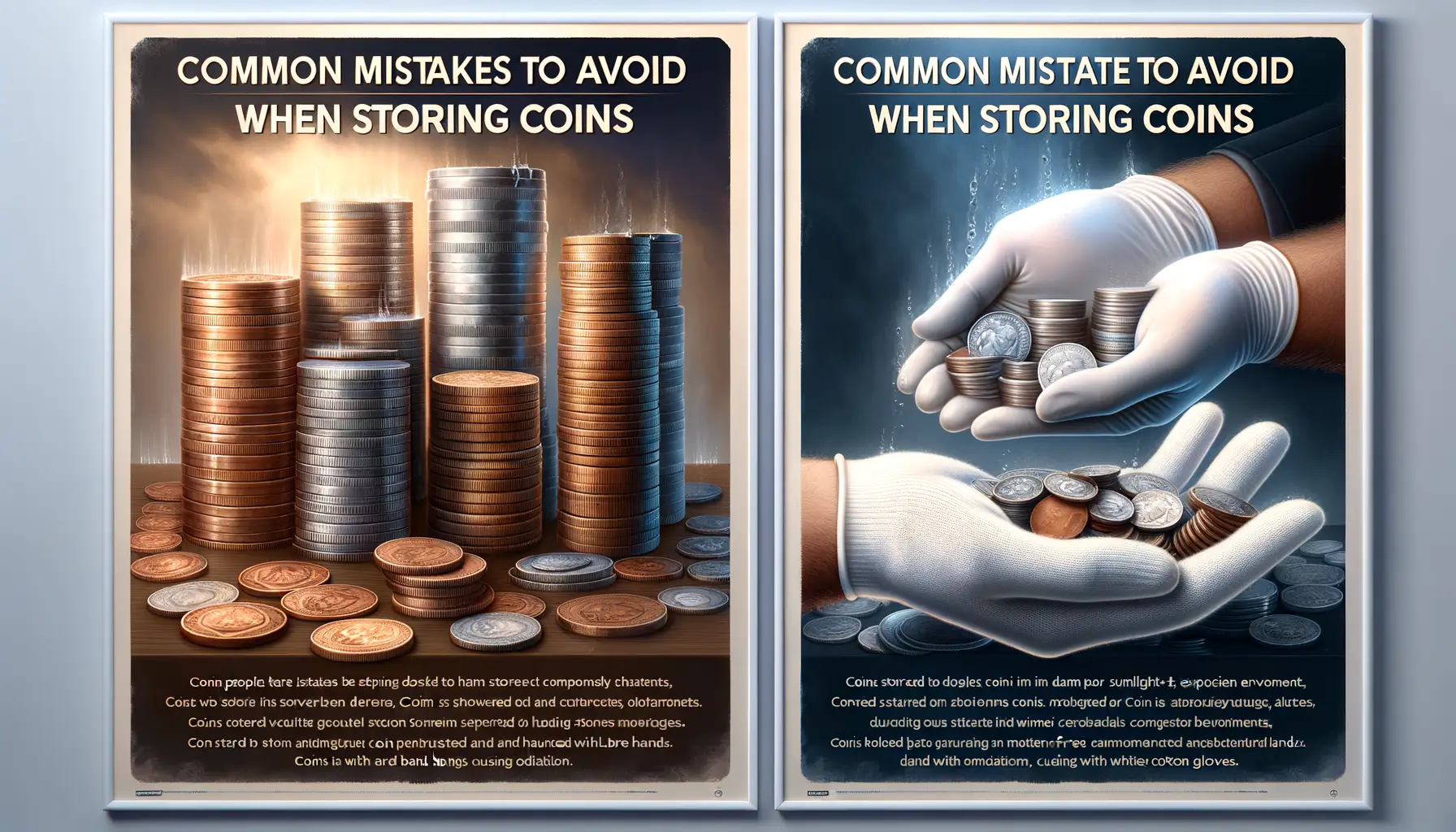Why Proper Storage is Essential for Coin Collections
The Hidden Dangers of Poor Coin Storage
Imagine this: You’ve spent years tracking down that elusive 1909-S VDB Lincoln cent or perhaps a stunning Morgan silver dollar with a frosty finish. Now, picture them tarnished, scratched, or worse—irreparably damaged—all because they weren’t stored properly. Heartbreaking, right? Coins are deceptively fragile. A single careless mistake can strip away their beauty and value in an instant.
Humidity sneaks in like an invisible thief, causing corrosion and unsightly discoloration. Even the natural oils on your fingers can leave behind stubborn marks that mar precious surfaces. And let’s not forget environmental villains like dust, acid-laced paper, or abrasive materials! Improper storage isn’t just risky—it’s like inviting a slow-moving disaster into your collection.
- Exposure to air accelerates oxidation, turning once-shiny coins dull or green with patina.
- Stacking coins loosely causes scratches and edge dents that even the best cleaning can’t undo.
- Using cheap plastic holders? They sometimes emit harmful chemicals that tarnish coins over time.
The Emotional Side of Preservation
But it’s not just about financial value, is it? Every coin tells a story. That Civil War token your grandfather passed down? It holds history, yes—but also love and connection. Proper storage is like building a safety net for these memories. Treating your coins the right way is a small gesture that says, “I care about your story and I want to preserve it.”
Best Practices for Handling Coins

Touch Coins Like You’re Handling a Butterfly
You wouldn’t grab a delicate butterfly with bare hands, would you? Coins, especially collectible ones, are just as fragile. Oils and moisture from your skin can leave behind invisible but devastating fingerprints. Over time, these marks can etch into the surface, permanently altering the coin’s value and beauty.
When handling your treasures, always use soft cotton gloves or invest in a pair of **professional-grade nitrile gloves**. These prevent contamination without sacrificing dexterity. Be mindful of how you hold them too—grip coins gently by the edges to avoid contact with the flat faces, which are more prone to damage.
Little Actions That Make a Big Difference
Here are some golden rules for coin handling that every collector should know:
- Lay coins down on a clean, non-abrasive surface if needed. Better yet, use a velvet-lined tray.
- Resist temptation—never polish or rub a coin’s surface! That “shine” could strip away its natural patina and character.
- Keep food, drinks, and sharp objects far away during handling sessions.
Imagine your coins are ancient whispers from the past, each one carrying a story. Treat them with love, patience, and care—and they’ll reward you with timeless beauty.
Types of Coin Storage Options

From Simple Sleeves to Vault-Like Security
When it comes to storing your beloved coins, the options are as diverse as the collections themselves. Picking the right one can feel like choosing between a cozy cottage and a fortress for your treasures—it all depends on your needs. Let’s explore.
For beginners or casual collectors, coin flips and sleeves are a trusty go-to. These lightweight, inexpensive holders are like a snug jacket for your coin, keeping it clean while letting you admire its beauty. But they’re not built for the long haul—think of them as temporary parking rather than a forever home.
If you’re stepping up your game, coin albums or folders are a natural next step. They organize your collection beautifully and provide easy access when you want to show off that rare Mercury dime. However, beware of PVC materials! Over time, they can damage your coins—a rookie mistake many regret.
For Collectors Who Dream Big
Serious about protection? Airtight holders and capsules are your best bet. They’re like armored glass cases for your coins, safeguarding them from air, moisture, and wandering fingerprints. Or, if you have a Jedi-level collection, consider a high-security safety deposit box at the bank. It might not be flashy, but it’s where your rarest finds will sleep soundly.
Tips for Long-Term Coin Preservation

Protecting Your Coins for the Long Haul
Imagine your coin collection as a time capsule, whispering stories to future generations. To keep those whispers intact, long-term preservation needs more than just luck. It’s like preparing for a marathon—not a sprint. Here’s how you can ensure your treasures stand the test of time.
- Control the atmosphere: Coins are picky roommates. They hate moisture, heat, and sudden temperature shifts. Store them in a cool, dry space—somewhere free from wild humidity swings. A dehumidifier can be your best ally if you live in a damp area.
- Avoid PVC plastics: Those cheap plastic flips? They might seem harmless but can leach chemicals over time, tarnishing your coins. Choose acid-free and archival-quality materials instead.
- Limit light exposure: Just like a vampire avoids sunlight, coins dislike direct UV rays. Over time, they can dull surfaces and erase delicate details.
Handle With Love, Not Just Care
The oils on your fingers are silent assassins when it comes to your coins. Always handle them with clean cotton gloves or by their edges to avoid leaving invisible fingerprints that could eventually etch into the surface. And if you’re sorting through a collection? Lay down a soft cloth underneath—it’s a great cushion should anything slip (because who hasn’t fumbled at least once?).
Common Mistakes to Avoid When Storing Coins

Overlooking Environmental Hazards
Imagine this: your prized coins, polished and gleaming, silently suffering in a hostile environment. It happens more often than collectors like to admit. A common mistake? Storing coins in areas prone to extreme conditions. Think basements with lurking moisture or attics where temperature swings wildly. Coins hate humidity—it’s their silent killer. High moisture levels can trigger oxidation, tarnishing that stunning patina forever.
Avoid this by keeping your collection in a dry, climate-controlled space. And don’t trust cardboard boxes as armor; they’re not impervious to the elements. Instead, go for something airtight, like high-quality coin capsules or albums with anti-corrosion materials.
Using the Wrong Materials
Even the best intentions can lead to disaster if you choose the wrong storage materials. Ever picked up a “coin album” only to find out later it contains PVC? Big mistake. PVC reacts with metals, leaving a sticky green residue that’s almost impossible to remove.
Watch out for these missteps:
- Storing coins in cheap plastic bags or non-archival holders.
- Using paper envelopes with acid that may discolor your treasures over time.
Your coins deserve better—invest in safe, high-grade storage designed specifically for collectibles.






